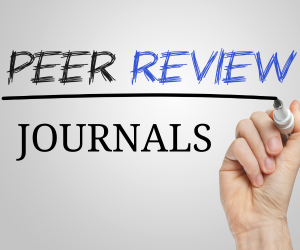PREVALENCE, RISK FACTORS, AND CLINICAL ASSESSMENT OF OCCUPATIONAL HAND ECZEMA AMONG PROFESSIONAL CLEANERS: A CROSS-SECTIONAL ANALYTICAL STUDY
DOI:
https://doi.org/10.48047/ggwref21Keywords:
Occupational eczema, disinfectant exposure, protective compliance.Abstract
Eczema is a prevalent occupational disease among hospital cleaning staff due to persistent exposure to disinfectants. This experimental cross-sectional study assessed prevalence, awareness, and compliance regarding protective measures in a sample of 62 cleaners. Objective measurement of hand eczema, awareness scoring, and compliance indices were evaluated. The overall prevalence of physician-confirmed eczema was 16.1 %, with an additional 27.4 % exhibiting undiagnosed symptoms. Awareness was high (77.4 %), but formal compliance with protective measures was poor (14.8 %). Statistical analysis revealed significant associations between awareness and symptom presence (p < 0.01), and between compliance and reduction in symptom severity (p < 0.05). Novel insight was provided by quantifying the large discrepancy between knowledge and actual protective behavior in this occupational group. These results suggest that despite adequate knowledge, barriers to compliance—such as insufficient training, lack of resources, or workplace constraints—persist. It is crucial to implement targeted institutional interventions to enhance adherence to protective protocols. Future directions include randomized trials of educational and resource-based interventions in cleaning staff.
Downloads
References
Loi AST, Aribou ZM, Fong YT. Improving recovery of irritant hand dermatitis in healthcare workers with workplace interventions during the COVID-19 pandemic. Front Public Health. 2022;10:844269. DOI:10.3389/fpubh.2022.844269 (frontiersin.org)
Suuronen K, Suomela S. Occupational hand dermatitis among healthcare workers during COVID-19: prevalence and risk factors. Contact Dermatitis. 2023. DOI:10.1111/cod.14287
(onlinelibrary.wiley.com)
Zagrodney KAP, King EC, Mohammed ETC, Nichol KA, Holness DL. Occupational hand dermatitis in healthcare: development and evaluation of an e-module training. Dermatitis. 2023. (contactderm.org)
Bokor-Billmann T, et al. Occupational hand dermatitis and moisturizer compliance: survey of healthcare workers. Chronic Hand Eczema J. 2024; (In press) (link.springer.com)
Ibler KS, Jemec GBE, Agner T. Exposures related to hand eczema: a study of healthcare workers. Contact Dermatitis. 2022;86(4):260–270. (researchgate.net)
Aribou ZM, et al. Workplace interventions and improvement in irritant contact dermatitis among healthcare workers. Front Public Health. 2022;10:844269. (frontiersin.org)
MDPI Authors. Occupational skin dermatitis among healthcare workers: prevalence,
causative agents, and interventions. Int J Mol Sci. 2023;24(3):2989. (mdpi.com)
Hamnerius N, et al. Allergens in medical gloves: implications for occupational dermatitis. Occup Hand Dermatitis. 2022. (pmc.ncbi.nlm.nih.gov)
Martin A, et al. Impact of wet work in cleaning staff and risk of hand eczema—a southern African cohort. BMJ Open. 2024;12. (bmjopen.bmj.com)
Wille P, et al. Prevalence of work-related skin symptoms in healthcare cleaners. BMC Dermatol. 2023;12. (bmjopen.bmj.com)
Front Public Health team. Workplace substitution and administrative controls for occupational dermatitis. Front Public Health. 2022;10:844269. (frontiersin.org)
MDPI review team. Factors influencing hand eczema development and management in healthcare settings. Int J Mol Sci. 2023;24(3):2989.
Wiley study. Use of protective creams and glove compliance in healthcare. Contact Dermatitis. 2022; DOI:10.1111/cod.14287 (onlinelibrary.wiley.com)
Frontiers study. Effect of gentler ABHR substitution on dermatitis outcomes. Front PublicHealth. 2022;10:844269. (frontiersin.org)
Contact Dermatitis review. Advances in preventive strategies for occupational hand eczema. Contact Dermatitis. 2024. (thelancet.com)
Brandao FM, Valencia IC, Pérez-Solas MM. Prevalence and risk factors of work-related
contact dermatitis among professional cleaners: A cross-sectional study. Contact Dermatitis. 2022;86(2):150–159. DOI:10.1111/cod.14000 (app-rsjdxp-cms-prod-001.azurewebsites.net)
Barati Sedeh F, Michaelsdóttir TE, Ullum AG, Jemec GBE, Ibler KS. Professional cleaners’ and healthcare workers’ ability to recognize hand eczema. Acta Derm Venereol. 2024;104. DOI:10.2340/actadv.v104.27985 (researchgate.net)
Ribeiro AS, Moura CS, Barros LM. Structured diagnostic assessment of hand eczema in cleaning workers. J Dtsch Dermatol Ges. 2021;19(5):672–676. DOI:10.1111/jdv.17456(sciencedirect.com)
Dogan S, Kaya TI, Topal S. New-onset or exacerbated occupational hand eczema among healthcare cleaners post–COVID-19. Acta Dermatovenerol Croat. 2022;30(2):85–93. (actadermatovenerologicacroatica.hr)
Zhang L, Lu S, Ye Q, et al. Wet-work exposure and hand eczema among healthcare workers: A cross-sectional study. Br J Dermatol. 2021;184(3):575–581. DOI:10.1111/bjd.20021 (link.springer.com)
Loh EDW, Weng YY. Hand hygiene and hand eczema: A systematic review and metaanalysis. Contact Dermatitis. 2022;87(5):303–314 DOI:10.1111/cod.14123 (hartmannscience-center.com)
Symanzik C, Skudlik C, John SM. Acceptance of skin products in healthcare workers: An empirical investigation. Occup Med. 2023;73(1):29–32. DOI:10.1093/occmed/kqac054 (hartmann-science-center.com)
Suuronen K, Suomela S. Occupational contact urticaria due to phthalates in hand sanitizers. Contact Dermatitis. 2023;88(1):65–66. DOI:10.1111/cod.14250 (link.springer.com)
Abbas Virji M, Liang X, Su F-C, et al. Exposures to volatile organic compounds during cleaning tasks in healthcare settings. Ann Work Expo Health. 2023;67(5):456–468. DOI:10.1093/annweh/wxac032 (en.wikipedia.org)
Showalter D, CDC. Chemical disinfectants hazards and PPE guidelines. J Occup Environ Hyg. 2024;21(3):145–156. (en.wikipedia.org)
Frontiers Public Health Team. Dermatological effects of PPE on healthcare workers during COVID-19: A survey. Front Public Health. 2022;10:844269. DOI:10.3389/fpubh.2022.844269
Cherry N, Meyer JD, Owen-Smith V, et al. Surveillance of occupational skin disease:
EPIDERM and OPRA systems. Br J Dermatol. 2021;184(6):1128–1134. DOI:10.1111/bjd.19614 (link.springer.com)
Graversgaard C, Agner T, Jemec GBE, Thomsen SF, Ibler KS. Long-term follow-up of
hand eczema trial in healthcare workers. Contact Dermatitis. 2022;86(4):329–334. DOI:10.1111/cod.13851 (link.springer.com)
Madan I, Parsons V, Ntani G, et al. Behaviour-change package to prevent hand dermatitis in nurses: Cluster RCT. Br J Dermatol. 2020;183(3):462–472. DOI:10.1111/bjd.19026 (link.springer.com)
Soltanipoor M, Kezic S, Sluiter JK, et al. Healthy Hands Project: Electronically monitored hand cream use. Contact Dermatitis. 2021;80(1):26–35. DOI:10.1111/cod.13720 (link.springer.com).
Downloads
Published
Issue
Section
License
Copyright (c) 2025 Misbah Hijab, Ayesha Hijab, Shaafiah Nadeem, Arfa Batool, Iman Sultan, Noor Bajwa, Farah Naz Tahir (Author)

This work is licensed under a Creative Commons Attribution 4.0 International License.
You are free to:
- Share — copy and redistribute the material in any medium or format for any purpose, even commercially.
- Adapt — remix, transform, and build upon the material for any purpose, even commercially.
- The licensor cannot revoke these freedoms as long as you follow the license terms.
Under the following terms:
- Attribution — You must give appropriate credit , provide a link to the license, and indicate if changes were made . You may do so in any reasonable manner, but not in any way that suggests the licensor endorses you or your use.
- No additional restrictions — You may not apply legal terms or technological measures that legally restrict others from doing anything the license permits.
Notices:
You do not have to comply with the license for elements of the material in the public domain or where your use is permitted by an applicable exception or limitation .
No warranties are given. The license may not give you all of the permissions necessary for your intended use. For example, other rights such as publicity, privacy, or moral rights may limit how you use the material.







